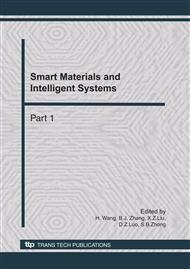[1]
Zhu jiwen. The application of Bass product diffusion model in the e-commerce studying. Scince&Technology progress and Policy, 2005, 22(9): 178-180. (in Chinese).
Google Scholar
[2]
F. M. Bass. A new product growth model for consumer durables, Management Science 1969, 15(5), 215-227.
DOI: 10.1287/mnsc.15.5.215
Google Scholar
[3]
Xu Jiuping, Liao Zhigao. Model for innovation diffusion rate, Chinese Journal of Management 1, 330-340, (2004).
Google Scholar
[4]
Xu Jiuping, Liao Zhigao. A class of linear differential dynamical systems with fuzzy initial condition . Fuzzy sets and systems, 2007, 158(21): 2339-2358.
DOI: 10.1016/j.fss.2007.04.016
Google Scholar
[5]
Liao Zhigao. The study of mobile communication technology diffusion in China with fuzzy bass model. Proceedings of The Third International Conference on Management Science and Engineering Management, England, UK, 2009, pp.3-9.
Google Scholar
[6]
Liao Zhigao. The Fuzzy Bass Model of Innovation Diffusion and Its Application on the Mobile Communication Technology in China. 2009 International Institutes of Applied Statistics Studies, Qingdao, China, (2009).
Google Scholar
[7]
Liao Zhigao. A dynamical diffusion model with time-delay for color TV in China. World Journal of Modelling and Simulation, 2006, 2(2): 73-86.
Google Scholar
[8]
Liao Zhigao, Xu Jiuping. Stability Analysis on a Class of innovation diffusion model and its application. Systems Engineering Theory&Practice, 2007, 8: 65-74.
DOI: 10.1016/s1874-8651(08)60048-4
Google Scholar
[9]
Xu Jiuping , Liao Zhigao. the dynamical multi-innovation diffusion model with active potential consumers and its application. . International Journal of Management Science and Engineering Management, 2006, 1(2): 148-160.
DOI: 10.1080/17509653.2006.10671005
Google Scholar
[10]
Harald Gruber. Competition and innovation: the diffusion of mobile telecommunication in central and eastern Europe, Information Economics and Policy 2001, 13, 19-34.
Google Scholar
[11]
Andrew Mcmeekin, Mark Tomlinson. Diffusion of household durables in the UK, Futures 1998, 30(10), 873-886.
Google Scholar
[12]
Yuan Pu Shao. Expert system diffusion in British banking: diffusion models and media factor, Information & Management 1999, 35, 1-8.
DOI: 10.1016/s0378-7206(98)00071-8
Google Scholar
[13]
Wang Wendi, P. Fergola. Innovation diffusion model in patch environment, Applied Mathematics and Computation 2003, 134, 51-67.
DOI: 10.1016/s0096-3003(01)00268-5
Google Scholar


